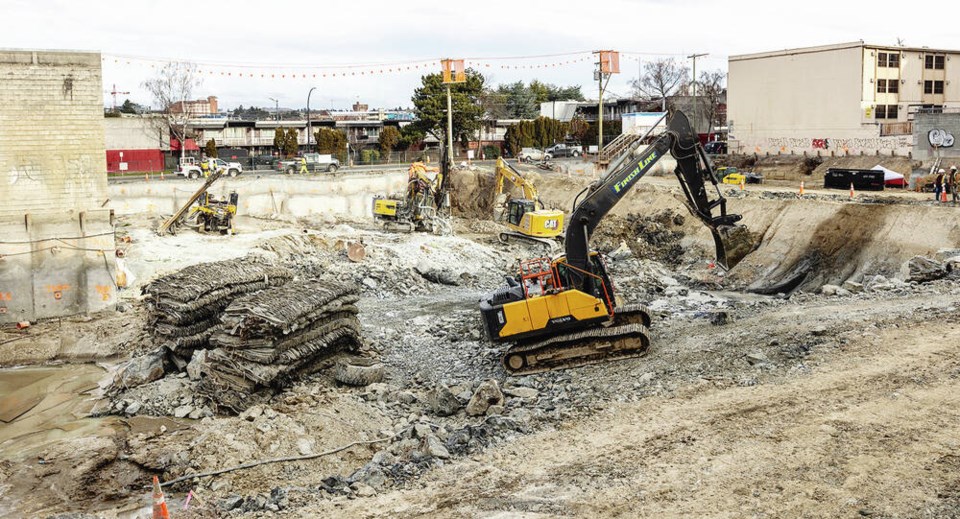Despite rising interest rates and increased costs, capital region homebuilders set a new record for housing starts last year.
Figures released Tuesday by Canada Mortgage and Housing Corporation show the region had 4,992 new homes started in 2023, breaking the record of 4,809 set in 2021. The previous record of 4,439 was set in 1976.
Casey Edge, executive director of the Victoria Residential Builders Association, said with costs soaring, delays at the approval stage and increasing fees like development cost charges, builders have no choice but to build big.
“They need very large multi-family projects because they can address the issue of economy of scale there.”
According to CMHC, of the 4,992 housing starts in the region last year, 4,238 were condominium units or rental apartments. Only 385 were single-family homes.
Edge pointed to a 23 per cent drop in the number of “missing middle” housing projects like townhouses last year.
“Missing middle, which is the more suitable home style — the townhomes and duplexes — for young families was down and that’s disappointing,” he said.
Edge said despite the record, the pace of building is not keeping up with demand.
There are currently 8,393 homes under construction in the region, the vast majority of them — 7,481 — condominiums or rental apartments, according to CMHC.
Across the region, Langford again led the way with 1,406 new homes started last year, followed by Victoria with 964, Esquimalt with 766 and Saanich with 555.
At the other end of the spectrum, Oak Bay started 32 new homes, North Saanich started 23, Metchosin eight and Highlands three.
Edge said he’s not sure what the effect will be of new provincial housing legislation that will allow single-family homes to be replaced by more dense housing forms like houseplexes, townhomes or small apartment buildings.
With its new housing legislation, the province created a tool to establish up front what amenity contributions — affordable housing units, parks, childcare and community facilities — developers would be expected to provide with each housing project.
It also altered development cost charges, which allow municipalities to collect money from developers to help cover the cost of core infrastructure like water, sewer and roads.
Under the changes, local governments would be able to allocate development cost charges for things like fire halls, police facilities and solid-waste facilities. “So there are going to be added costs,” said Edge. “You can’t expand costs for construction and then expect all of this new housing to be built. We’ll wait and see how all of this plays out.”



